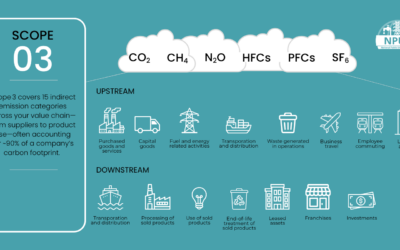Blockchain: What You Need to Know to Know if it’s What You Need
Given the recent amount of change COVID-19 has introduced, just about everyone should be looking at how they can innovate to stay ahead. In times when everything is up in the air, there is a lot more opportunity to cast aside preconceived notions or latent assumptions and explore new ways of getting things done better. That is why many companies are now looking at how they can better adopt, integrate, and utilize emerging technologies, one of which is Blockchain. And, like most technologies, all you need is a basic understanding of how Blockchain works in order to know if it is something you could leverage for your organization. To help you decide if you need Blockchain for your organization, we have this guide on what you need to know about Blockchain to use it.
At its most basic level, a Blockchain is a system of a record called a distributed ledger. A distributed ledger records transaction data simultaneously across all participating instances, called nodes. It is similar to a decentralized database, where data is stored on multiple computers in distributed locations. However, a decentralized database still has some type of administrator or controlling function. This leads to one of the key differences between the two systems. All the computers on a decentralized database trust each other (i.e., the security of the data is provided by the controlling function), whereas those on a distributed ledger do not (i.e., the security of the data must be provided by the framework of the system itself).
Most current Blockchains maintain their data integrity through a concept called proof of work. Basically, each block on a blockchain holds transactional data along with a hashtag that ties it into the chain directly connected to the preceding block. Neither the information in the block nor its place in the chain can be altered unless the parties trying to change it control 51% of the computing power in the chain. It is a consensus-driven network of computers that grows more secure the larger it gets.
Additionally, Blockchain technology took a leap forward in usability when the concept of embedding code into the blocks was introduced on the Ethereum chain. This is what enables the establishment of smart contracts within a blockchain and greatly increases Blockchain’s use cases. Smart contracts are automated contracts that will take a specified action or set of actions once the established conditions of the contract are met. For example, if a musician were to put their music on a blockchain under a smart contract, they could dictate their royalties and streamline the payment process for using their music by removing third parties and automating the process (here are some real-world examples). And the number of additional potential applications is ever-expanding, to include use cases such as currency, peer-to-peer economies, asset management, voting, and supply chains.
However, the technology of Blockchain is still in its early stages and has some issues to overcome before it can be more widely adopted in all its possible applications. For example, the proof of work method takes a lot of computing power, and verifying new blocks across an entire network where only one block can be added at a time is relatively slow for some applications. But, these are problems that are already being addressed by concepts such as replacing proof of work with proof of stake (security is provided by distributing ownership instead of computing power) or rethinking the blockchain referencing protocol to improve scalability (like IOTA and RedBelly are doing).
Given these improvements, the number of applications on the horizon for blockchain is countless, from managing an IoT network to managing distributed supply chains at the sensor level. So how can you determine if investing in blockchain is right for your organization? Consider these two questions:
- Do multiple parties need to have read/write access to a shared database?
- Do these parties trust each other?
The first question addresses the underlying nature of Blockchain. If your organization operates in a way in which a single party is solely responsible for generating and manipulating data in your database, then there is no tangible benefit to moving your data to a Blockchain. In fact, it will likely be less efficient than the current database solutions on the market today.
However, if your organization requires multiple parties to generate data in a shared data set, the critical question to answer is if they trust each other. And by trust, I am referring to the potential for participating parties to have diverging interests. If there is an advantage to one party not providing data to another within a network or providing inaccurate data, then there is the potential for diverging interests between the parties, and they would not inherently trust each other. In this case, Blockchain technology is worth further exploring to see how your organization could leverage the innate security and transparency benefits it provides.
As you look for ways to improve your business’s operations in this constantly shifting environment, keep those two questions in mind. The proper application of blockchain technology can improve your organization’s security while simultaneously providing real-time data transparency and increasing automation and, therefore, organizational throughput.
Author: Paul Lamers



